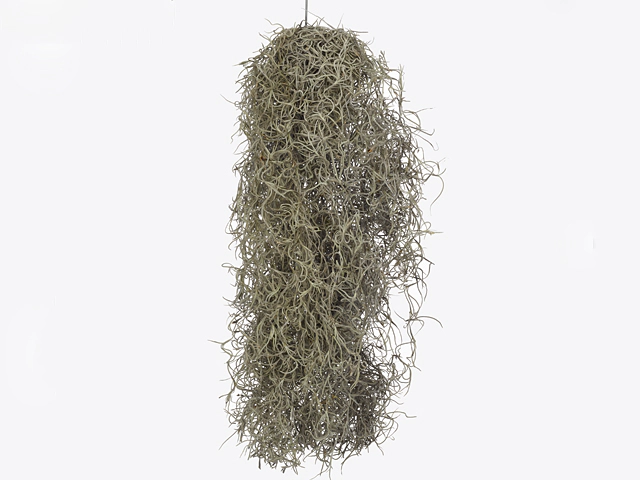Tillandsia usneoides

Today, we will explore the fascinating world of Tillandsia usneoides, commonly known as Spanish moss or Old Man's Beard. This intriguing plant belongs to the bromeliad family and can be found hanging from trees in various parts of North, Central, and South America.
Tillandsia usneoides is an epiphytic plant, which means it grows on other plants but does not rely on them for nutrients. Instead, this bromeliad gets its nutrients from the air, rain, and debris such as fallen leaves that collect around it. The plant uses its long, gray-green stems to absorb moisture and nutrients, making it a true air plant.
One of the most distinctive features of Tillandsia usneoides is its delicate appearance. The plant consists of thin, thread-like stems that drape down from trees, giving it a wispy, ethereal quality. From a distance, it may resemble a hanging curtain of silvery-green foliage. When the wind blows, these graceful strands sway gently, enhancing the mystical allure of Spanish moss.
Despite its name, Tillandsia usneoides is not actually a moss but a bromeliad. It produces small, inconspicuous flowers that range in color from greenish-white to pale yellow. These flowers bloom on slender, wiry stalks and add a touch of beauty to the plant's already captivating form.
Spanish moss serves not only as an enchanting ornament for trees but also as a cozy habitat for various creatures. Many bird species, including owls and hummingbirds, find shelter, nesting materials, and even food in the moss. Insects, spiders, and small reptiles also make homes within the cunning embrace of Tillandsia usneoides.
Throughout history, Spanish moss has found various practical uses. Native Americans used it for bedding, weaving it into mats and pillows. European settlers later adapted this practice and utilized Spanish moss for stuffing mattresses and pillows. Additionally, the fiber of this plant was used in making ropes, baskets, and even paper.
For gardeners and enthusiasts, Tillandsia usneoides offers a low-maintenance houseplant option. As an air plant, it requires minimal care, making it an ideal choice for those who lack a green thumb. Simply mist the plant occasionally, or soak it in water for a short period, and it will thrive happily.
However, in recent years, Spanish moss has faced some challenges. Changes in land use, pollution, and habitat loss have resulted in a decline in its population in certain regions. The plant is also susceptible to damage by industrial pollutants, pesticide overspray, and extreme weather events. Efforts are underway to conserve and protect this unique species to ensure its survival for future generations to enjoy.
In conclusion, Tillandsia usneoides, the bromeliad known as Spanish moss, is a captivating and versatile plant. With its ethereal appearance, ecological significance, and practical uses, it has left an indelible mark on the cultures and landscapes of the Americas. As we continue to appreciate its beauty and value, let us also strive to protect and preserve this remarkable epiphyte for years to come.
Market availability index by month:
| Jan. | Feb. | Mar. | Apr. | May | Jun. | Jul. | Aug. | Sep. | Oct. | Nov. | Dec. |
|---|---|---|---|---|---|---|---|---|---|---|---|
| 3 | 3 | 3 | 3 | 4 | 3 | 3 | 3 | 3 | 4 | 4 | 4 |